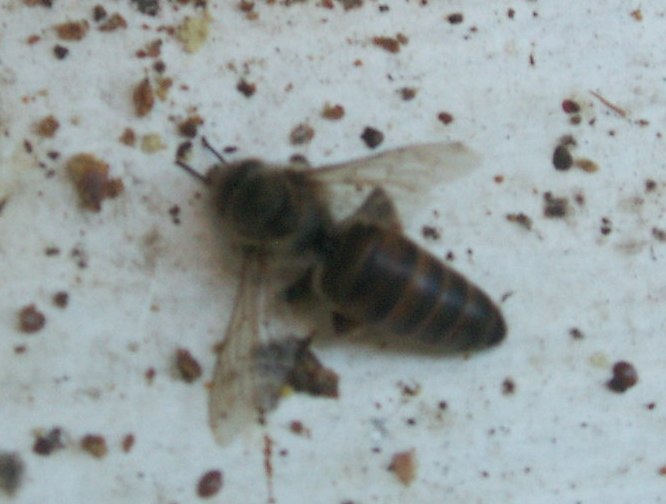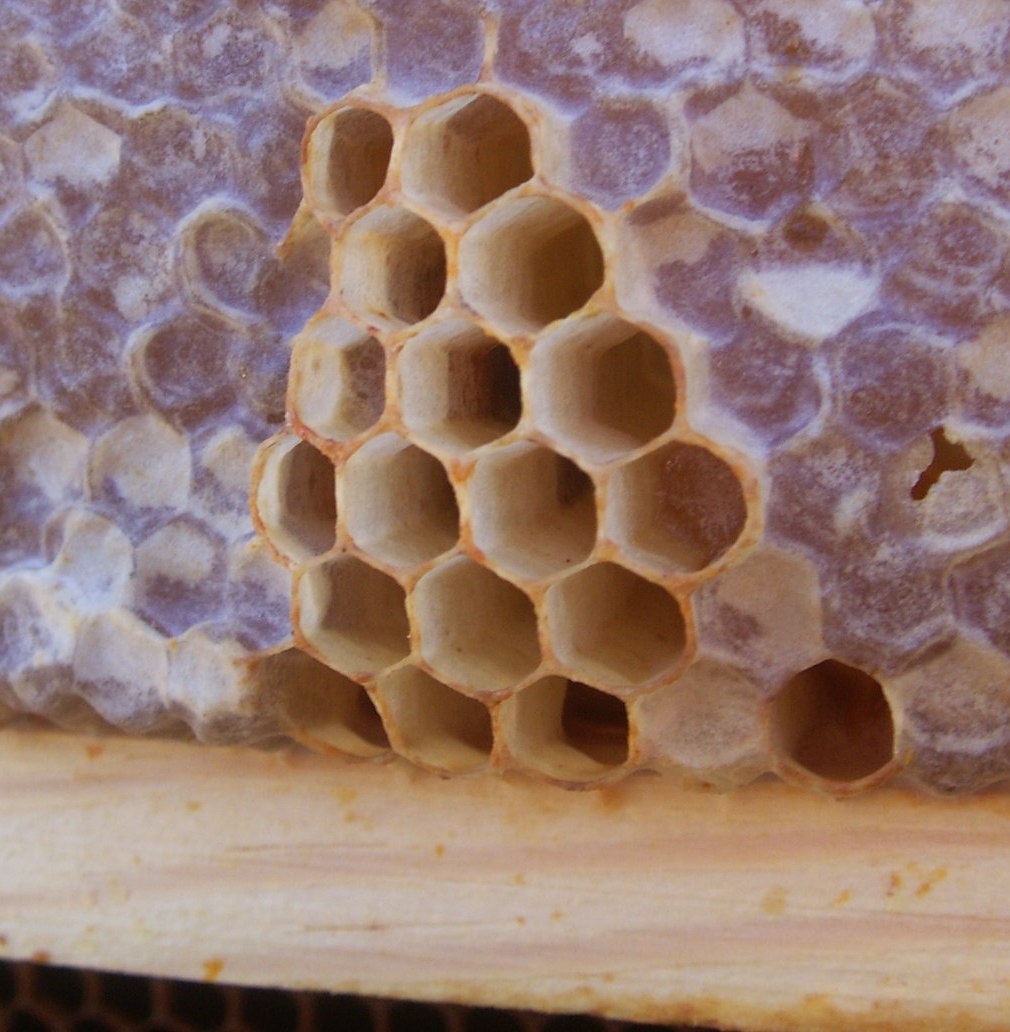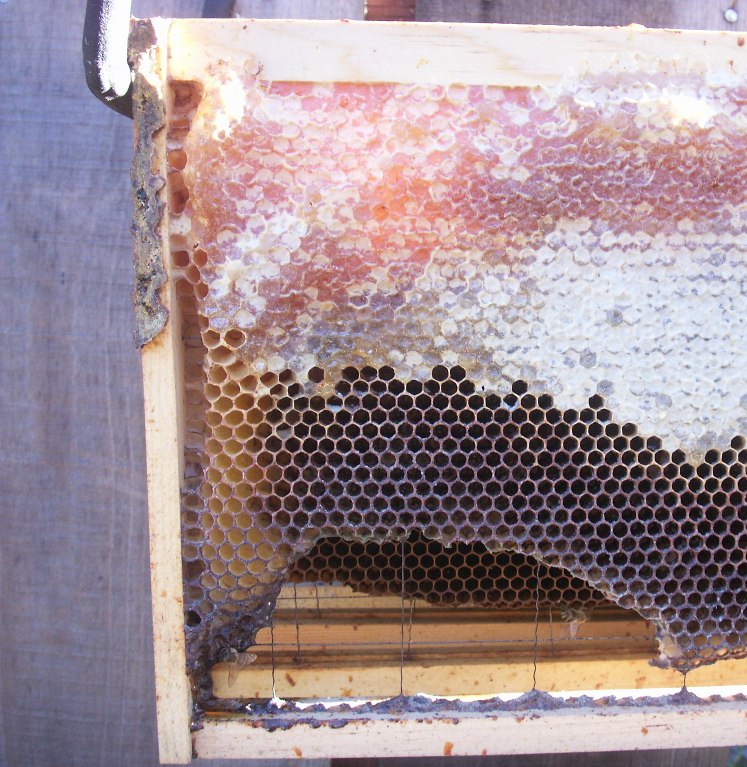Today we made the sad discovery that our Queen had died, and our hive had passed away. There were some signs that all was not right a couple of weeks ago when I looked in and saw that there were very few bees in the hive -- only two or three frames covered in the brood box, and none elsewhere. Last week it seemed like things were looking up, as there were bees active up in the super, but when I came back today, there was no activity at all.

We found the queen at the bottom of the brood box; she had died and fallen down to the screen. We moved her to the landing; she can be seen in the picture to the left. The queen is about half again as large as a typical worker. She was not ridged when we found her; it's hard to say how long she had been dead, but it probably was not for very long.
It was very sad to find our bees dead, because they were very special bees. They came to our yard last spring in a swarm, and landed on our pear tree. A friend of ours who kept bees came over with some equipment, and captured the Queen for us. From that point on, we were beekeepers. We did our best to read up on beekeeping procedures and techniques, but really had to learn everything "on the fly".

Before the collapse, the worker bees seemed to have known that something was wrong, as they started to build succession cells. Queens start out the same as workers when first laid, but are kept on a special diet that allows them to grow to full maturity. To prepare for a new Queen, the workers build larger cells to accommodate the larger size that she will reach. The cells in the picture to the right are definitely large enough to hold a queen, but the workers made them too late; the queen never laid in them.
Update: These actually don't appear to be large enough to be queen cells, so they are probably something else.

There was no sign of any new eggs in any of the brood cells -- at least not that I noticed. There were a number of capped cells, though, and in some places, a worker had matured to the point of being ready to emerge from the cells. If this happens when there are no nurse bees available to help the new bee out, then it will likely die before it can get itself free. This was the fate of the bee in the picture to the left -- and many others like it. It takes 21 days for a bee to emerge from its cell, and 10 days for the workers to cap the cell so that the pupa can develop into a grown bee, so the Queen was still laying two or three weeks before the point where the colony died -- which was probably just a few days ago.

So, what caused our hive to die? It's hard to say; our Queen might have just been old, and happened to pass away in the winter, a time when she wasn't laying much, making it hard for the workers to manage the succession. There were some things that I did wrong as an inexperienced beekeeper that made things harder on them. One big thing was that I did not manage the frames in the brood box very well. It is important to be sure to push all of the frames close together, allowing just enough room for a bee to walk between the rows of honeycomb. On the far edge of the box, I had allowed the frames to be left almost twice this distance, which makes it harder for the bees to keep their hive warm, and allows room for other creatures to invade the hive. In the picture to the left, it is clear that some brave critter was able to get into the hive at the point where I had left extra space, and eaten away a portion of the comb. The edges were definitely chewed away, and were covered in some light mold, so the attack happened some time ago. The colder temperature at the bottom of the hive near the entrance may have caused the bees to pull away from that portion of the comb, leaving it more vulnerable -- or perhaps the invader didn't care about getting stung. In the middle of winter, we did install a bar over the entrance of the hive, to help keep warmth in and invaders out. This might have stopped what may have been a regular intrusion into the hive. Things might have gone better for our bees if we had put the entrance bar up sooner, and kept the frames closer together. Hopefully, this experience will help us do a better job with our next hive.
- Log in to post comments